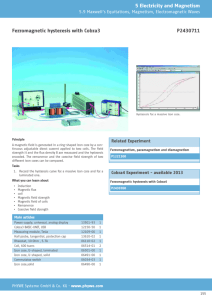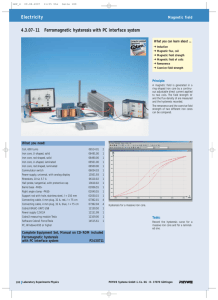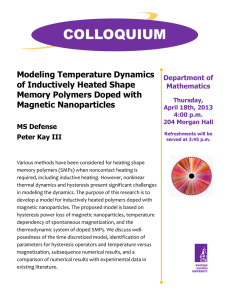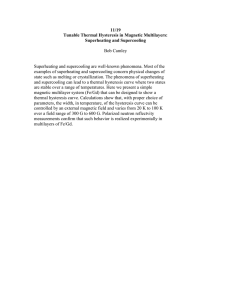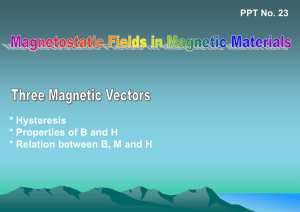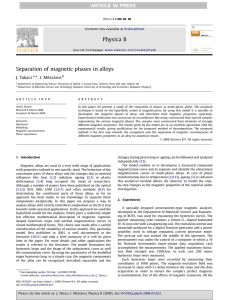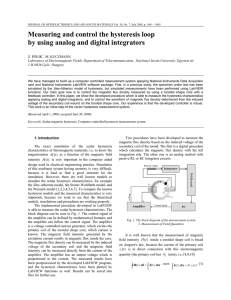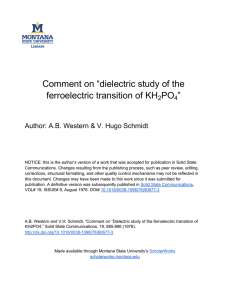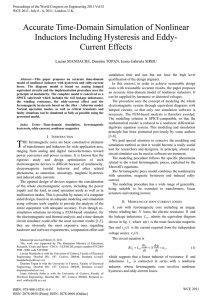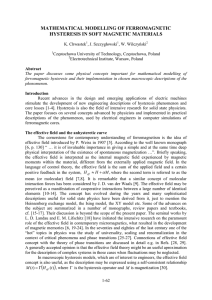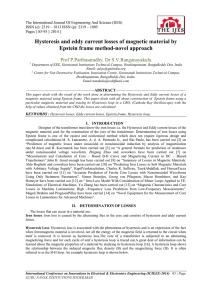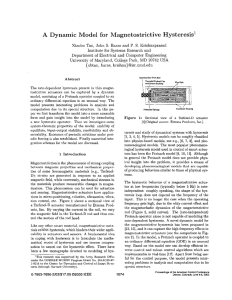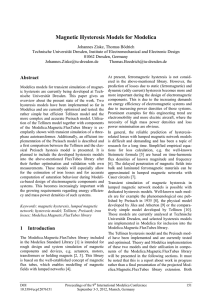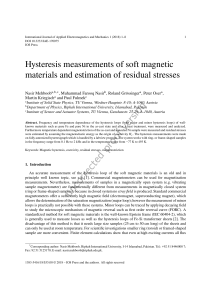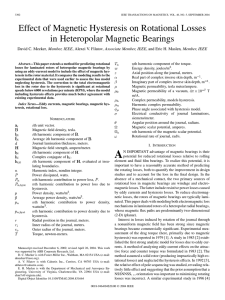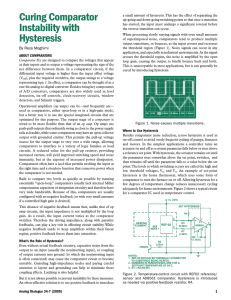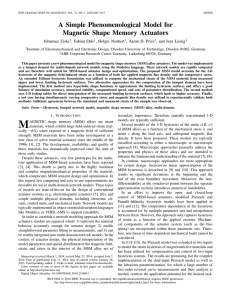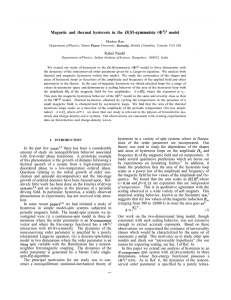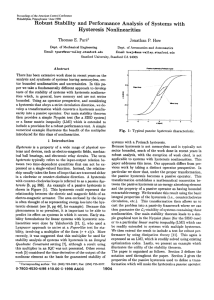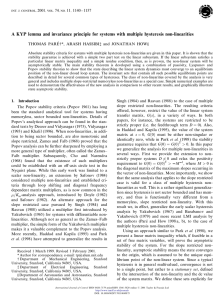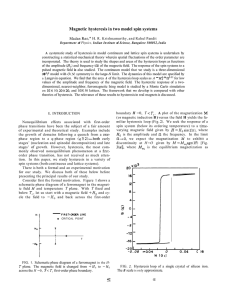“Finite Element Method Incorporating the hysteresis effect for modeling ... Magnetic Particle Inspection”
advertisement
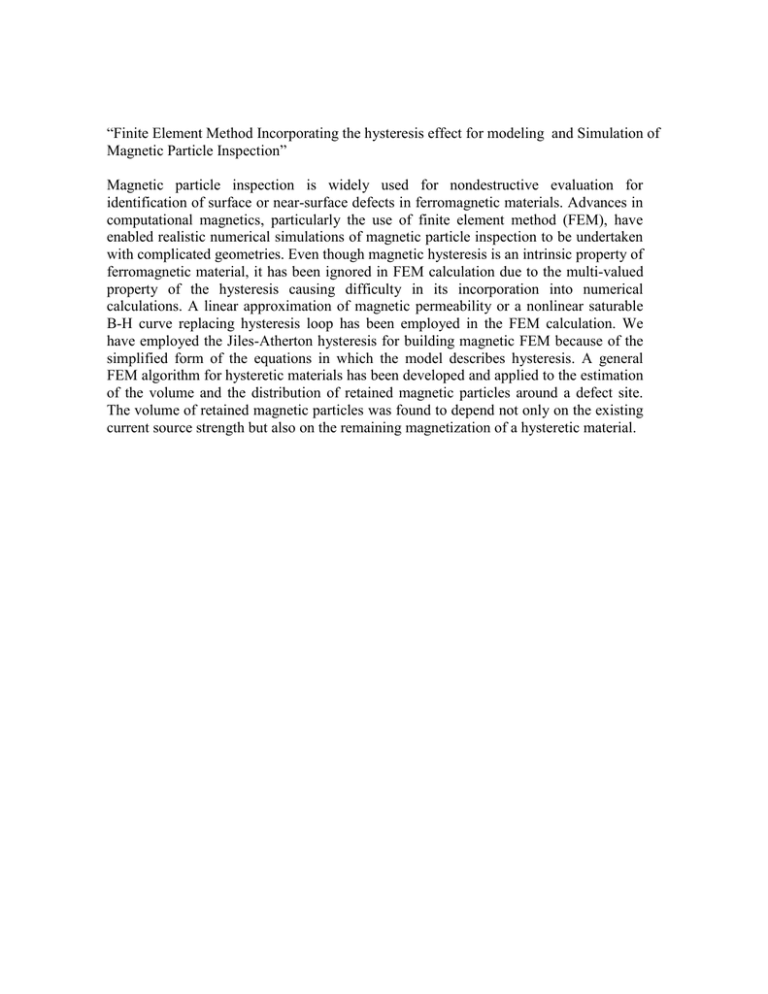
“Finite Element Method Incorporating the hysteresis effect for modeling and Simulation of Magnetic Particle Inspection” Magnetic particle inspection is widely used for nondestructive evaluation for identification of surface or near-surface defects in ferromagnetic materials. Advances in computational magnetics, particularly the use of finite element method (FEM), have enabled realistic numerical simulations of magnetic particle inspection to be undertaken with complicated geometries. Even though magnetic hysteresis is an intrinsic property of ferromagnetic material, it has been ignored in FEM calculation due to the multi-valued property of the hysteresis causing difficulty in its incorporation into numerical calculations. A linear approximation of magnetic permeability or a nonlinear saturable B-H curve replacing hysteresis loop has been employed in the FEM calculation. We have employed the Jiles-Atherton hysteresis for building magnetic FEM because of the simplified form of the equations in which the model describes hysteresis. A general FEM algorithm for hysteretic materials has been developed and applied to the estimation of the volume and the distribution of retained magnetic particles around a defect site. The volume of retained magnetic particles was found to depend not only on the existing current source strength but also on the remaining magnetization of a hysteretic material.
